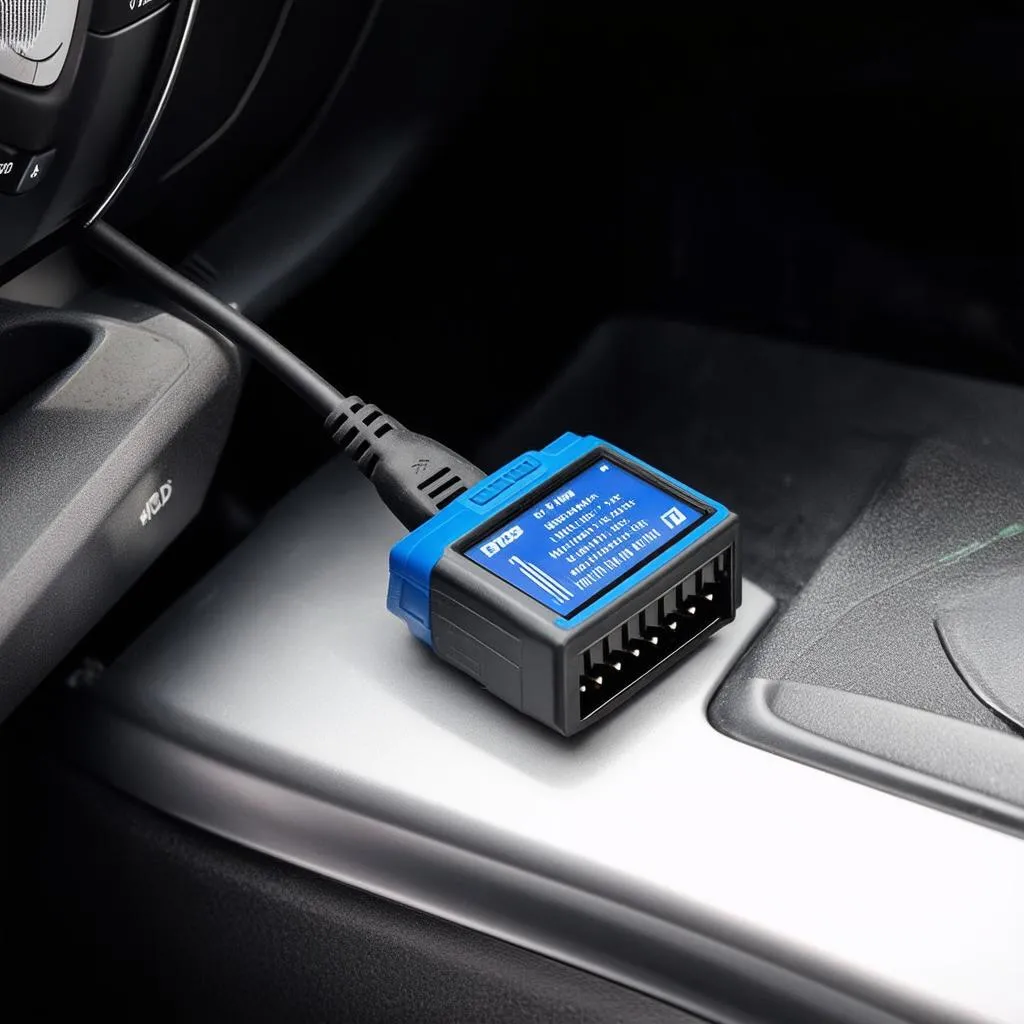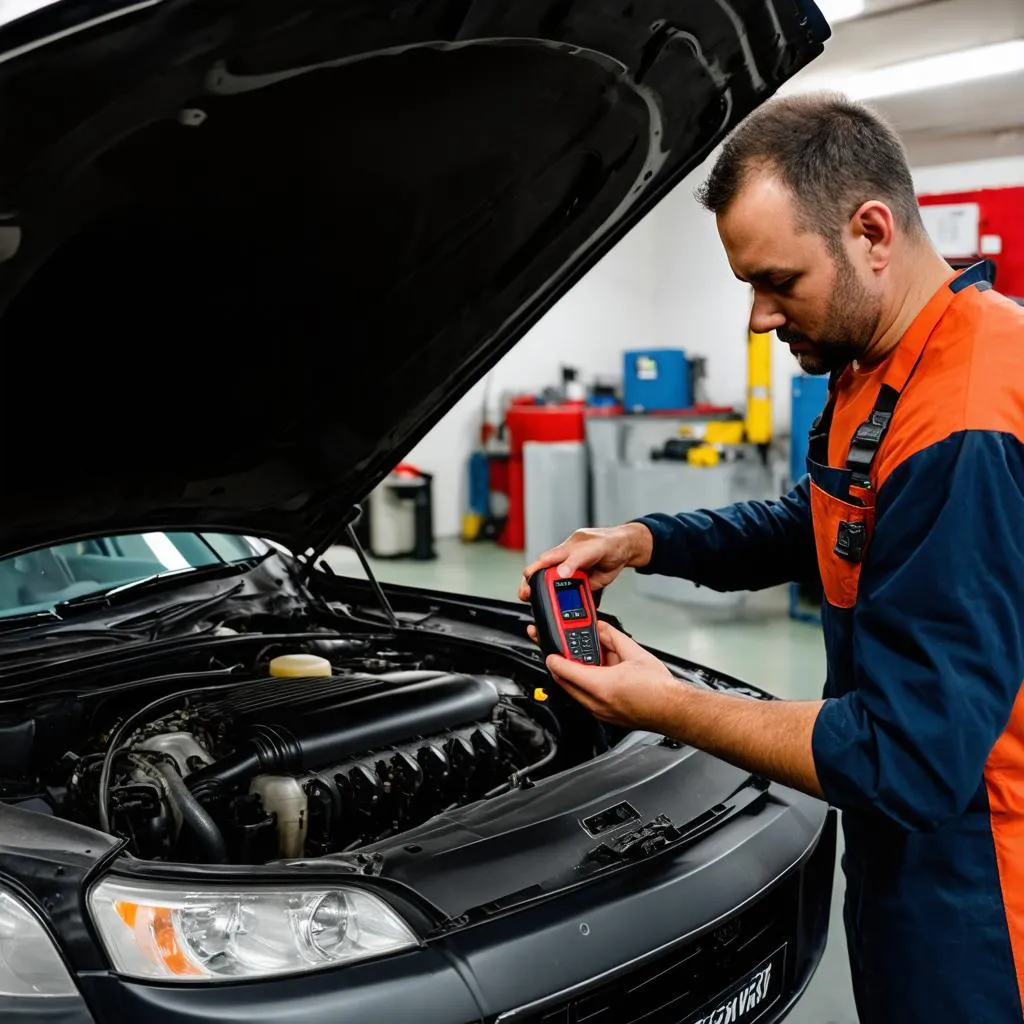Imagine this: You’re cruising down the Pacific Coast Highway, the California sun warming your face, radio blasting your favorite tunes. Suddenly, a yellow light flickers on your dashboard – the dreaded “check engine” light. Your heart sinks. What does it mean? Is it serious? Don’t panic! It’s probably just a “check engine OBD II diagnostic trouble code” trying to tell you something.
Understanding the Language of Your Car: OBD II Codes Explained
Think of your car’s computer system like its brain, constantly monitoring various systems. When something seems amiss, it generates a specific code, stored in the On-Board Diagnostics II (OBD II) system. This code is your car’s way of saying, “Hey, take a look at this!”
Why Do Check Engine Lights Turn On?
Check engine lights can illuminate for a variety of reasons, some minor, others more serious. Here are just a few examples:
- Loose Gas Cap: Yes, something as simple as a loose gas cap can trigger the light. It disrupts the fuel system’s pressure and can affect your car’s emissions.
- Faulty Oxygen Sensor: This sensor measures the oxygen in your exhaust to optimize fuel efficiency. A malfunctioning one can impact your car’s performance and emissions.
- Failing Catalytic Converter: This crucial component reduces harmful emissions. If it’s not working correctly, your car won’t pass emissions tests and could face performance issues.
Decoding the Codes
OBD II codes are like a secret language, but luckily, you don’t need to be a mechanic to decipher them. You can purchase an affordable OBD II scanner online or at any auto parts store. Simply plug it into your car’s OBD II port (usually located under the steering wheel) and it will display the code.
Expert Insight: “Many people are intimidated by check engine lights, but understanding OBD II codes empowers car owners to take control of their vehicle’s health,” says John Miller, author of “The Complete Guide to Automotive Diagnostics.”
 OBD Scanner in Use
OBD Scanner in Use
Common OBD II Codes and What They Mean
Let’s delve into some of the most frequently encountered codes:
P0420: Catalyst System Efficiency Below Threshold (Bank 1)
This code often signals a failing catalytic converter, a costly repair. However, it could also be caused by a faulty oxygen sensor, which is less expensive to replace.
P0301: Cylinder 1 Misfire Detected
A misfire occurs when a cylinder in your engine isn’t firing properly, leading to reduced power and potential engine damage. This could be due to faulty spark plugs, ignition coils, or fuel injectors.
P0171: System Too Lean (Bank 1)
This code indicates that your engine is not getting enough fuel, often caused by a vacuum leak, a faulty mass airflow sensor, or a problem with the fuel injectors.
P0440: Evaporative Emission Control System Malfunction
This broad code can be tricky to diagnose. It suggests a problem with the system that prevents fuel vapors from escaping into the atmosphere. Common culprits include a loose gas cap, a faulty EVAP canister purge valve, or a leak in the EVAP system.
What to Do When the Check Engine Light Turns On
- Don’t Panic: While it’s crucial to address the issue, a check engine light doesn’t necessarily mean your car is about to break down.
- Note Any Symptoms: Is your car running rough, lacking power, or making unusual noises? This information can help diagnose the problem.
- Read the Code: Use an OBD II scanner to retrieve the diagnostic trouble code.
- Research the Code: Look up the code online or in a reliable automotive repair manual to understand its meaning.
- DIY or Seek Professional Help: Depending on your comfort level and the complexity of the issue, you can attempt to fix the problem yourself or take your car to a trusted mechanic.
 Mechanic Inspecting Engine
Mechanic Inspecting Engine
FAQs about Check Engine Obd Ii Diagnostic Trouble Codes
Q: Can I still drive my car with the check engine light on?
A: It depends on the severity of the problem. If the light is flashing, it indicates a serious issue, and you should pull over immediately and have your car towed to a mechanic. If the light is steady, you can usually drive a short distance, but it’s best to get it checked out as soon as possible.
Q: Will disconnecting the battery reset the check engine light?
A: Yes, temporarily. Disconnecting the battery can clear the codes and turn off the light. However, the light will return if the underlying issue persists.
Q: How often should I get my car’s OBD II system checked?
A: It’s a good practice to have your car’s OBD II system scanned annually, even if there are no warning lights illuminated.
Need Help Deciphering Your Car’s Codes?
If you’re feeling overwhelmed by OBD II codes or need assistance with diagnostic tools, don’t hesitate to reach out. Our team of automotive experts is here to help 24/7. Contact us via Whatsapp at +84767531508 for personalized support.
Keep Your Engine Happy
Understanding and addressing Check Engine Obd Ii Diagnostic Trouble Codes can save you time, money, and potential headaches down the road. Remember, knowledge is power when it comes to car maintenance.
Interested in learning more about your car’s diagnostic system? Check out these related articles:
By staying informed and proactive, you can keep your car running smoothly for miles to come.